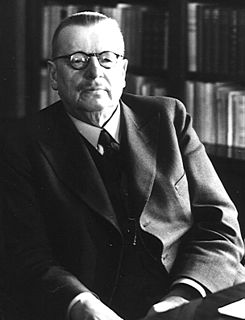
Urho Kaleva Kekkonen was a Finnish politician who served as the eighth and longest-serving President of Finland (1956–82). He ruled over Finland for nearly 26 years, and held a questionably large amount of power; he is often classified as an autocrat. Regardless, he remains a popular, respected and recognizable figure. Previously, he had served as Prime Minister of Finland, Minister of Foreign Affairs, Speaker of the Finnish Parliament (1948–50) and Minister of Justice. As president, Kekkonen continued the "active neutrality" policy of his predecessor President Juho Kusti Paasikivi, a doctrine that came to be known as the "Paasikivi–Kekkonen line", under which Finland retained its independence while maintaining good relations and extensive trade with members of both NATO and the Warsaw Pact. He hosted the European Conference on Security and Co-operation in Helsinki in 1975 and was considered a potential candidate for the Nobel Peace Prize that year.
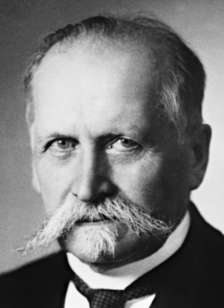
Kyösti Kallio was the fourth President of Finland (1937–1940). He was a prominent leader of the Agrarian League, and served as Prime Minister four times and Speaker of the Parliament six times.

Risto Heikki Ryti was the fifth president of Finland, from 1940 to 1944. Ryti started his career as a politician in the field of economics and as a political background figure during the interwar period. He made a wide range of international contacts in the world of banking and within the framework of the League of Nations. Ryti served as prime minister during the Winter War and the Interim Peace. Later he served as president during the Continuation War. After the war, Ryti was the main defendant in the Finnish War-responsibility trials.
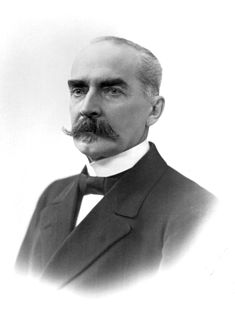
Kaarlo Juho Ståhlberg was a Finnish jurist and academic, who played a central role in the drafting of the Constitution of Finland in 1919. He was the first President of Finland (1919–1925) and a liberal nationalist.

The President of the Republic of Finland is the head of state of Finland. Under the Constitution of Finland, executive power is vested in the President and the Finnish Government, with the former possessing only residual powers. The President is directly elected by universal suffrage for a term of six years. Since 1991, no President may be elected for more than two consecutive terms. The President must be a Finnish citizen by birth. The Presidential office was established in the Constitution Act of 1919. Since March 1, 2012, the President of Finland has been Sauli Niinistö. In May 2017, Niinistö announced that he would seek re-election in the 2018 presidential election, running as an independent candidate. NCP and the Christian Democrat Party supported his candidacy. He won re-election in the first round on 28 January 2018 with 62.7% of the vote and his second term began on 1 February 2018.

The Centre Party of Finland is a centrist, liberal, agrarian political party in Finland.

Karl-August Fagerholm was Speaker of Parliament and three times Prime Minister of Finland. Fagerholm became one of the leading politicians of the Social Democrats after the armistice in the Continuation War. As a Scandinavia-oriented Swedish-speaking Finn, he was believed to be more to the taste of the Soviet Union's leadership than his predecessor Väinö Tanner. Fagerholm's post-war career was however marked by fierce opposition from both the Kremlin and domestic communists. He narrowly lost the presidential election to Urho Kekkonen in 1956.

The war-responsibility trials in Finland were trials of the Finnish wartime leaders held responsible for "definitely influencing Finland in getting into a war with the Soviet Union and United Kingdom in 1941 or preventing peace" during the Continuation War, the Finnish term for their participation in the Second World War from 1941–1944. Unlike other World War II war-responsibility trials, the Finnish trials were not international. The trials were conducted from November 1945 through February 1946 by a special court consisting of the presidents of the Supreme Court of Finland, the Supreme Administrative Court of Finland, a professor from the University of Helsinki and twelve MPs appointed by the Parliament of Finland.
Parliamentary elections were held in Finland on 17 and 18 March 1945. The broad-based centre-left government of Prime Minister Juho Kusti Paasikivi remained in office after the elections.
Peace opposition (Rauhanoppositio) was a Finnish cross-party movement uniting both bourgeois politicians like Paasikivi, Kekkonen, Sakari Tuomioja etc. and social democrats, aiming at stepping out of the Continuation war and finding a way to conclude peace with the Soviet Union. The number of MPs belonging to this group was rather small at first, but it gained influence as the military situation worsened. After the signing of armistice, Paasikivi established his cabinet, which included members of the previous opposition group.
Parliamentary elections were held in Finland on 1 and 2 July 1936. Following the election Prime Minister Toivo Mikael Kivimäki of the National Progressive Party was defeated in a confidence vote in September 1936 and resigned in October. Kyösti Kallio of the Agrarian League formed a centrist minority government after Pehr Evind Svinhufvud refused to allow the Social Democrats to join the government. After Svinhufvud's defeat in the February 1937 presidential election, Kallio took office as the new President in March 1937, and he allowed the Social Democrats, Agrarians and Progressives to form the first centre-left or "red soil" Finnish government. Aimo Cajander (Progressive) became Prime Minister, although the real strong men of the government were Finance Minister Väinö Tanner and Defence Minister Juho Niukkanen (Agrarian).
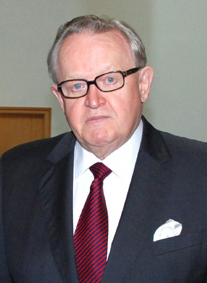
Presidential elections were held in Finland on 16 January 1994, with a second round on 6 February.
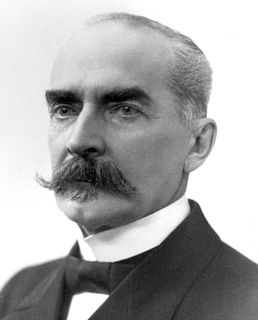
Indirect presidential elections were held for the first time in Finland in 1919. Although the country had declared Prince Frederick Charles of Hesse King on 9 October 1918, he renounced the throne on 14 December. The President was elected by Parliament, with Kaarlo Juho Ståhlberg of the National Progressive Party receiving 71.5% of the 200 votes. Ståhlberg, a moderate, liberal and reformist politician, who favoured improving the material well-being of workers and other economically poor Finns, received the votes of Social Democrats, Agrarians and Progressives. He also firmly supported the new Finnish Republic, and a parliamentary form of government with a strong President as a mediator and a political reserve for politically troubled times. Mannerheim, an independent right-winger and monarchist, suspected the democratic, republican and parliamentary form of government of producing too partisan political leaders, and of working ineffectively during crises. Ståhlberg favoured the signing of peace treaty between Finland and the Soviet Russia, while Mannerheim in the summer of 1919 strongly considered ordering the Finnish army to invade St. Petersburg to help the Russian Whites in that country's civil war. Only the National Coalitioners and Swedish People's Party voted for Mannerheim in this presidential election.

Two-stage presidential elections were held in Finland in 1925. On 15 and 16 January the public elected presidential electors to an electoral college. They in turn elected the President. The result was a victory for Lauri Kristian Relander, who won on the third ballot. The turnout for the popular vote was just 39.7%. The outgoing President, K.J. Ståhlberg, had refused to seek a second term. According to the late Agrarian and Centrist politician, Johannes Virolainen, he stepped down after one term because he believed that an incumbent President would be too likely to win re-election. President Ståhlberg claimed that he had already completed his political service to Finland as President. Moreover, he wanted to step down because many right-wing Finns opposed him. According to Pentti Virrankoski, a Finnish historian, President Ståhlberg hoped that his retirement would advance parliamentary politics in Finland. Ståhlberg's party, the Progressives, chose Risto Ryti, the Governor of the Bank of Finland, as their presidential candidate. The Agrarians only chose Lauri Kristian Relander as their presidential candidate in early February 1925. The National Coalitioners originally chose former Regent and Prime Minister Pehr Evind Svinhufvud as their presidential candidate, but before the presidential electors met, they replaced Svinhufvud with Hugo Suolahti, an academician working as the Rector (Principal) of the University of Helsinki. Relander surprised many politicians by defeating Ryti as a dark-horse presidential candidate, although he had served as the Speaker of the Finnish Parliament, and as Governor of the Province of Viipuri. Ståhlberg had quietly favoured Ryti as his successor, because he considered Ryti a principled and unselfish politician. He was disappointed with Relander's victory, and told one of his daughters that if he had known beforehand that Relander would be elected as his successor, he would have considered seeking a second term.
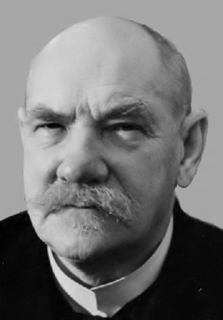
Two-stage presidential elections were held in Finland in 1931. On 15 and 16 January the public elected presidential electors to an electoral college. They in turn elected the President. The result was a victory for Pehr Evind Svinhufvud, who won on the third ballot by just two votes. The turnout for the popular vote was 47.3%. This presidential election was held during an ideologically, politically, socially and economically tense time. The Great Depression was impoverishing many Finnish farmers and workers. The far-right Lapua Movement had not settled for the ban of the Communist Party and its affiliated organizations in the autumn of 1930. It wanted to help elect a President who would also strongly oppose the Social Democrats and moderate bourgeois parties, such as the Progressives. Although Svinhufvud disapproved of the Lapua Movement's violent kidnappings of left-wing politicians and other illegal acts, he was their preferred presidential candidate. Former President K.J. Ståhlberg, a champion of democracy, parliamentarism and the rule of law, had been briefly kidnapped by some activists of the Lapua Movement with his wife in October 1930. He was chosen as the Progressive presidential candidate. Speaker of the Finnish Parliament, Kyösti Kallio, held ideals similar to those of Ståhlberg, and he became the Agrarian presidential candidate. The outgoing President, Lauri Kristian Relander, had lost the Agrarian presidential candidacy to Kallio, because he did not condemn the Lapua Movement as strongly as Kallio did, and a sufficient number of Agrarians believed that Kallio could control the Lapua Movement's extremists more effectively than Relander. Right-wing Finns and some centrists, such as a prominent Agrarian parliamentarian, Juho Niukkanen, were concerned that Ståhlberg's re-election as the Finnish President would escalate political tensions in Finland. The Commander-in-Chief of the Civil Guards, Major General Lauri Malmberg, announced in the Finnish Parliament that he would not guarantee order among the Civil Guards, if Ståhlberg was elected President. Svinhufvud's razor-thin victory required Niukkanen's arm-twisting tactics, whereby he pressured all the Agrarian presidential electors to support Svinhufvud. This 69-year-old and slightly ailing conservative politician was considered by his supporters as a sufficiently bold, solid and patriotic man to re-unite the ideologically divided Finns. His pro-democracy supporters hoped that he could keep both right-wing extremists and left-wing extremists in check.

Two-stage presidential elections were held in Finland in 1950, the first time the public had been involved in a presidential election since 1937 as three non-popular elections had taken place in 1940, 1943 and 1946. On 16 and 17 January the public elected presidential electors to an electoral college. They in turn elected the President. The result was a victory for Juho Kusti Paasikivi, who won on the first ballot. The turnout for the popular vote was 63.8%. President Paasikivi was at first reluctant to seek re-election, at least in regular presidential elections. He considered asking the Finnish Parliament to re-elect him through another emergency law. Former President Ståhlberg, who acted as his informal advisor, persuaded him to seek re-election through normal means when he bluntly told Paasikivi: "If the Finnish people would not bother to elect a President every six years, they truly would not deserve an independent and democratic republic." Paasikivi conducted a passive, "front-porch" style campaign, making few speeches. By contrast, the Agrarian presidential candidate, Urho Kekkonen, spoke in about 130 election meetings. The Communists claimed that Paasikivi had made mistakes in his foreign policy and had not truly pursued a peaceful and friendly foreign policy towards the Soviet Union. The Agrarians criticized Paasikivi more subtly and indirectly, referring to his advanced age, and speaking anecdotally about aged masters of farmhouses, who had not realized in time that they should have surrendered their houses' leadership to their sons. Kekkonen claimed that the incumbent Social Democratic minority government of Prime Minister K.A. Fagerholm had neglected the Finnish farmers and the unemployed. Kekkonen also championed a non-partisan democracy that would be neither a social democracy nor a people's democracy. The Communists hoped that their presidential candidate, former Prime Minister Mauno Pekkala, would draw votes away from the Social Democrats, because Pekkala was a former Social Democrat. The Agrarians lost over four per cent of their share of the vote compared to the 1948 parliamentary elections. This loss ensured Paasikivi's re-election. Otherwise Kekkonen could have been narrowly elected President - provided that all the Communist and People's Democratic presidential electors would also have voted for him.
Early and indirect presidential elections were held in Finland in 1940 after President Kyösti Kallio resigned on 27 November following a stroke on 27 August. The 1937 electoral college was recalled and elected Prime Minister Risto Ryti, who received 288 of the 300 votes. Most other Finnish politicians considered Ryti a principled, unselfish, intelligent and patriotic man, who could lead Finland effectively enough during World War II. His leadership qualities had been tested already during the Winter War. Also the outgoing President Kallio considered him the best available presidential candidate. In early December 1940, the Soviet Foreign Minister, Vyacheslav Molotov, interfered with the Finnish presidential elections by claiming to the Finnish Ambassador to the Soviet Union, J.K. Paasikivi, that if potential presidential candidates such as Marshal Mannerheim, former President Svinhufvud or former Prime Minister Kivimäki were elected President, the Soviet government would consider Finland unwilling to fulfill its peace treaty with the Soviet Union. Due to the lingering threat of another war and the Karelian refugees' dispersal throughout Finland, regular presidential elections were cancelled, and instead the 1937 presidential electors were summoned to elect the President. Under these tense political circumstances, Ryti had no problem winning these exceptional presidential elections by a landslide.

Two-stage presidential elections were held in Finland in 1956. On 16 and 17 January the public elected presidential electors to an electoral college. They in turn elected the President. The result was a victory for Urho Kekkonen, who won on the third ballot over Karl-August Fagerholm. The turnout for the popular vote was 73.4%. Kekkonen had been Juho Kusti Paasikivi's heir apparent since the early 1950s, given his notable political skills for building coalitions, bargaining, risk-taking and adjusting his tactics, actions and rhetoric with regard for the prevailing political wind. On the other hand, his behaviour and political tactics, including sharp-tongued speeches and writings, utilization of political opponents' weaknesses, and rather close relations with the Soviet leaders, were severely criticized by several of his political opponents. Kekkonen's colourful private life, including occasional heavy drinking and at least one extramarital affair, also provided his fierce opponents with verbal and political weapons to attack him. Several other presidential candidates were also criticized for personal issues or failures. Despite all the anti-Kekkonen criticism, his political party, the Agrarians, succeeded for the first time in getting the same share of the vote in the presidential elections' direct stage as in the parliamentary elections. President Paasikivi had neither publicly agreed nor refused to be a presidential candidate. He considered himself morally obliged to serve as President for a couple of more years, if many politicians urged him to do so. Between the first and second ballots of the Electoral College, one National Coalitioner phoned him, asking him to become a dark-horse presidential candidate of the National Coalitioners, Swedish People's Party and People's Party (liberals). At first, Paasikivi declined, requiring the support of Social Democrats and most Agrarians. Then he moderated his position, but mistakenly believed that he would receive enough Social Democratic, Agrarian and Communist and People's Democratic electors' votes to advance to the crucial third ballot. This did not happen, because all Agrarian electors remained loyal to Kekkonen, all Social Democratic electors remained loyal to Fagerholm, and the Communist and People's Democratic electors split their votes to help Fagerholm and Kekkonen advance to the third ballot. The bitterly annoyed and disappointed President Paasikivi publicly denied his last-minute presidential candidacy two days later. Kekkonen was elected President with the narrowest possible majority, 151 votes to 149. For several decades, the question of who cast the decisive vote for him has been debated among Finnish politicians and some Finnish journalists.



